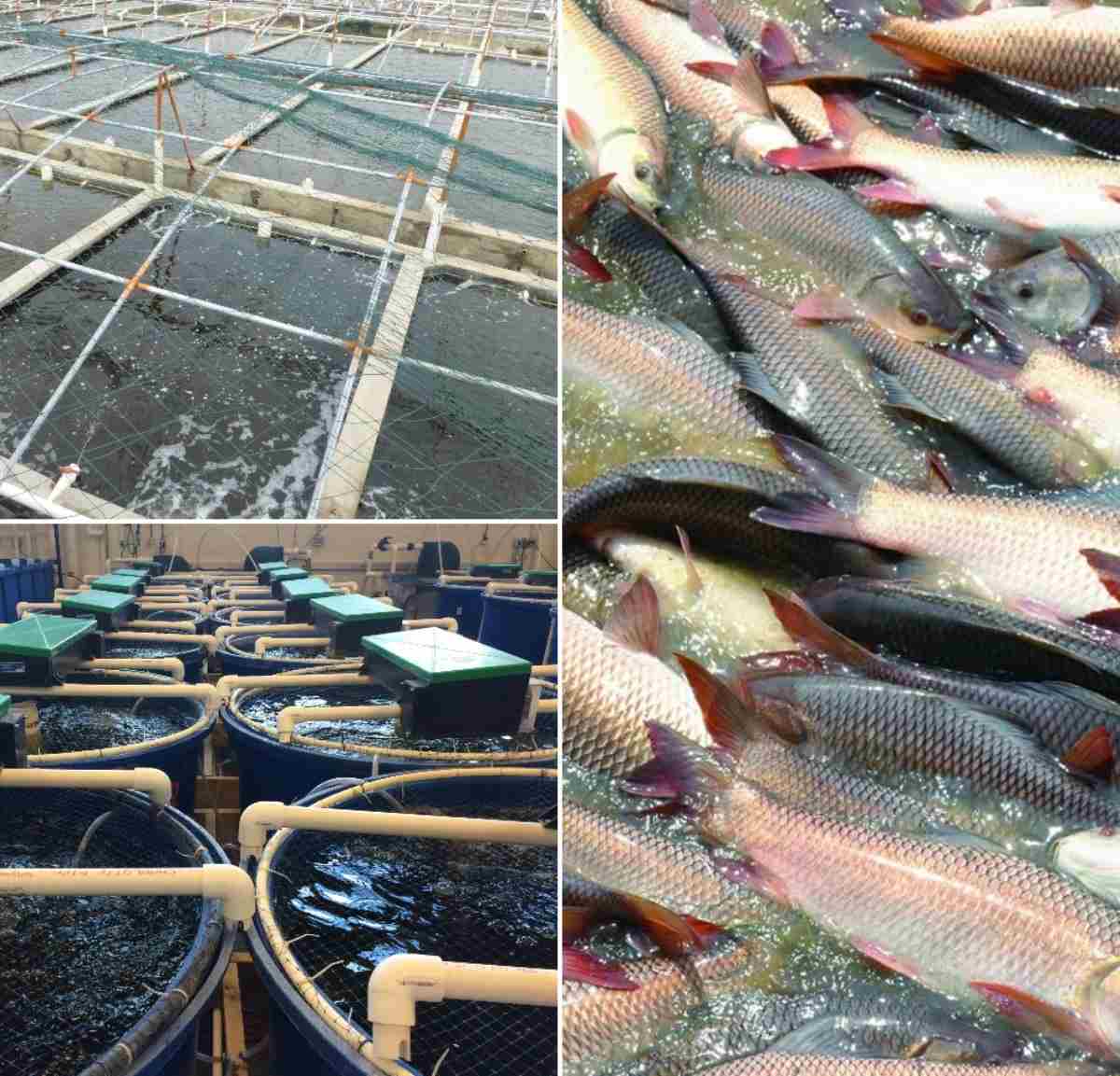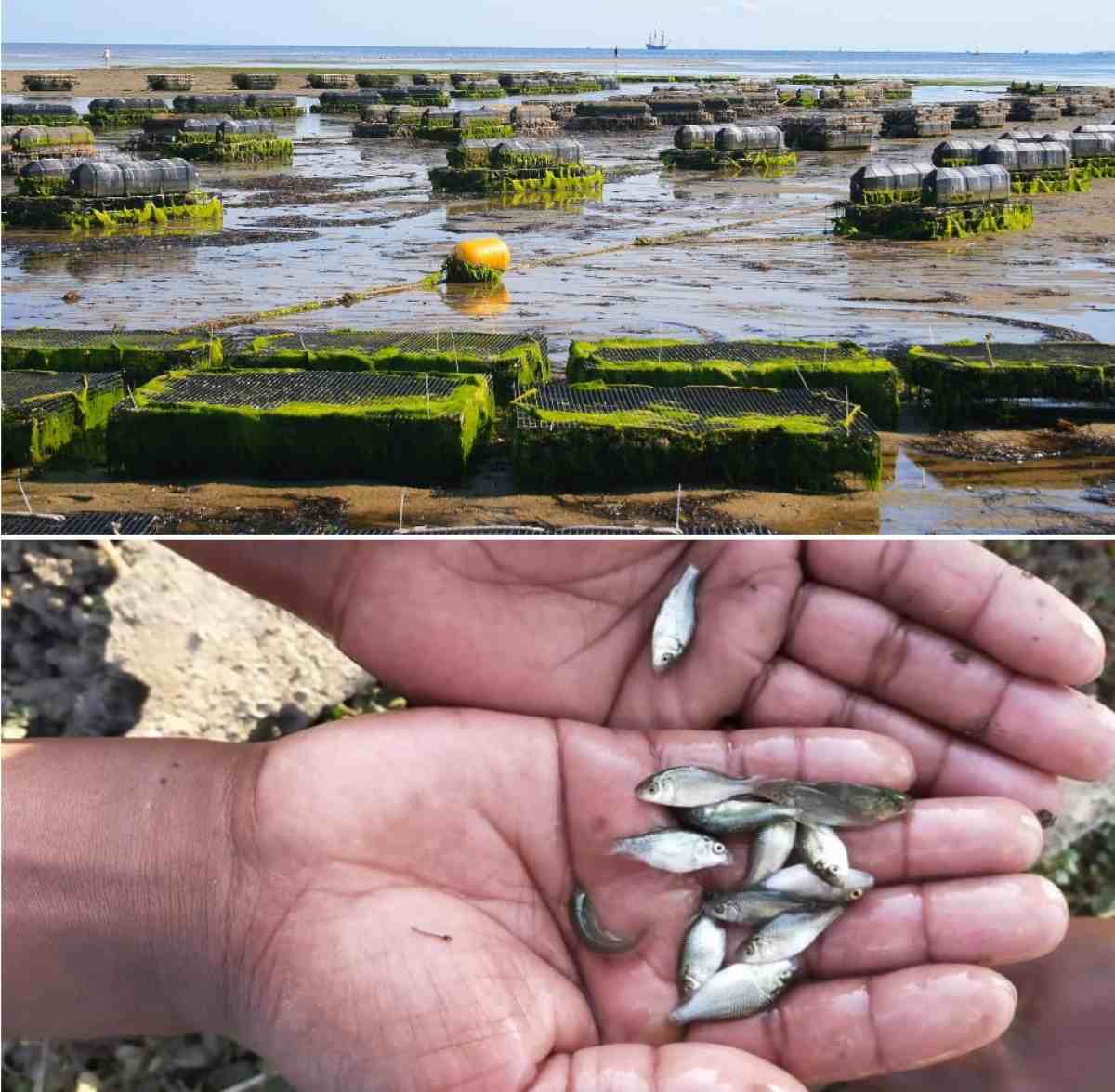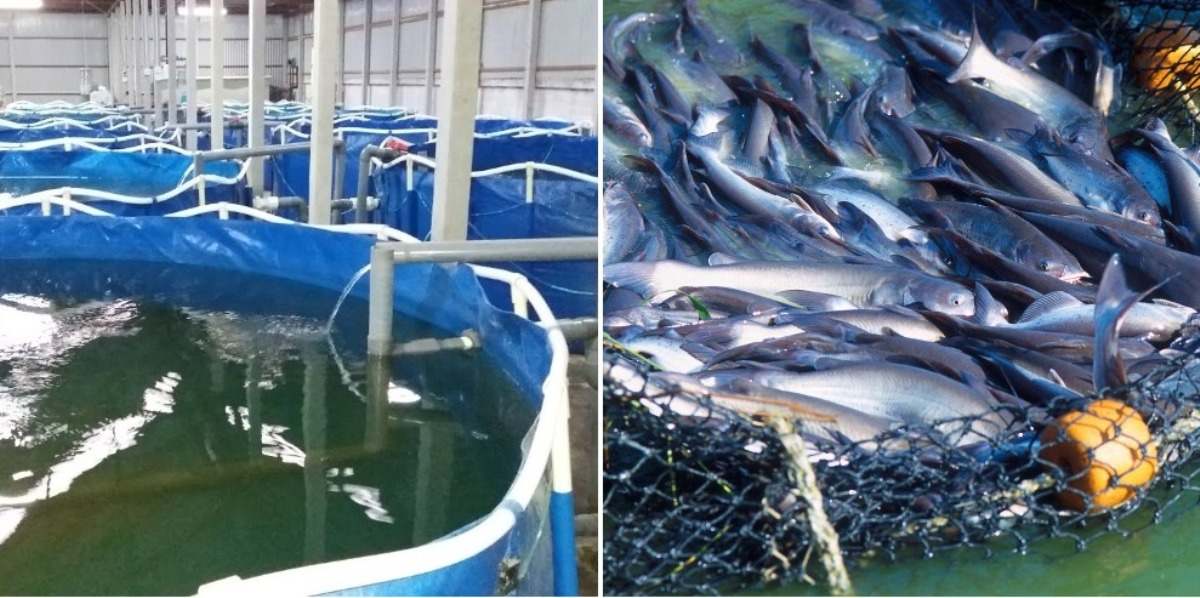Organic aquaculture in India: Organic aquaculture aims at the maintenance of the sustainability of the system by restricting the introduction of harmful substances that adversely alter the ecosystem. Organic aquaculture is a process of sustainable cultural practices based on long term ecologically and environmentally sound practices. This practices help in raising aquatic products in a humane manner that is sustainable and also pollution-free. For instance, good health management practices minimize stress by providing free movement, suitable living conditions and by optimum stocking relative to the carrying capacity of the farming system. Organic feed, in the case fishmeal as a component in organic feed, should be from certified sustainable sources. Harvested products must be pollution-free and sustainably produced.
A step by step guide to organic aquaculture in India
The principles of organic aquaculture are to produce healthy, disease-free natural seafood, without the use of any antibiotics, hormones, and chemicals, etc. and also protecting the environment from all adverse conditions.
Organic aquaculture effectively protects the health of consumers by reducing the overall exposure to harmful chemicals and antibiotics. It is an accepted way of production in a sustainable and eco-friendly manner. These have natural fish production, improving traditional production and high efficiency with low stocking density. Disuse of chemical products and growth or breeding hormones controlled and certified production until consumption are the main advantages of organic aquaculture. Because of these reasons, the organic aquaculture system takes much attention all over the world.

Organic aquaculture plays an important role in increasing soil fertility, minimizing input costs and producing safer products. Chemical fertilizers leave harmful residues in plants. Long-term use of such organic food materials can lead to serious diseases. And chemicals mix with and contaminate both soils and the water.
Importance of organic aquaculture in India
Organic aquaculture farming has become more important as consumers have more conscious about the environment, sustainability and harmful impacts of intensive and unsustainable aquaculture. This aims to provide fish and fishery products that are ecologically, economically and socially viable. The diversity at the levels of species, management and culture in aquaculture demands enormous efforts to utilize the immense potential of organic aquaculture.
You should not miss the Organic Farming Business Plan, Profitability.
Organic fish farming
Organic fish farming is a newly developed concept and is still in the early stages of development and strives to re-establish a proper balance in aquaculture systems, for the benefit of the fish, the environment and consumers.
However, for the moment, three issues have to be conformed to for setting up standards. And, the use of pesticides and antibiotics, which are conventionally used in aquaculture are not to be permitted. Water, which is both soil and air to the fish, is the main issue, the quality of which plays an important role in the quality of the product. Standards should be set up on the quality and purity of the incoming and outgoing water in terms of environmental impact.
The feed, mainly consisting of fishmeal, fish oil, cereal-based products, vitamins, and minerals, etc. should be organically produced. And it is not an easy task to bring down and remove the level of organochlorine pollutants in the marine fish that are used for conversion into fishmeal.
Fish fed with natural ingredients from certified organic agriculture and sustainable fisheries – feeds are particularly formulated to match exactly what our fish would eat in the wild.
Raised in the clean and deep waters of the Mediterranean – the production site is free of all industrial, agricultural and urban activity and virtually unexposed to pollutants.
Grown in spacious enclosures, taking up 1% of the volume in their pens – reducing population density to 1/3 that of conventional farms enables our fish to live in a way natural to the fish species and by the highest animal welfare standards.
Raised slowly as nature intended – absolutely no additives, antibiotics or chemicals of any kind are allowed in production.
Fish health and welfare
Organic farming management practices achieve a high level of disease resistance and prevention of infection. Principally, some precautions for the fish not to be sick must be taken. All management techniques, particularly when influencing production levels and speed of growth maintain the good health of the living organisms. To maintain this, the stock intensity must be low, regular health checks should be made. That means dead fish should be immediately removed from the pool and stressing factors should be lowered to the minimum level. The choice of the species resistant to diseases and subspecies must be considered. The fish species whose races are in danger can be preferred.
In the case of disease, it is proper to use natural treatment methods such as homeopathic methods. And synthetic chemical medicines, antibiotics are not allowed. If any medicine is given in 3 months line before the sale of the product, any type of fish meat, roes, aquatic creatures or products obtained from them cannot be sold as organic.
Certified organic aquaculture in India
The National Organic Standards Board (NOSB), an elected body that guides the U.S. Department of Agriculture’s policy decisions regarding the NOP (National Organic Program) on the certified organic aquaculture, recommended the following criteria for fish as organic;
- Fish cannot be fed non-organic feed. Currently, certified organic livestock has to be fed about 100 percent organic feed.
- Farmed fish to be fed fishmeal made from wild fish that do not carry mercury and extra toxins.
- And fish not to be raised in open-net pens. These cages can lead to pollution from concentrated waste and spread disease and parasites to wild fish populations. Species farmed organically are freshwater trout, carp, eel, tench, catfish, tilapia, saline water salmon, sea bass, sea bream, turbot, mussels, and shrimp.
Incase if you miss this: Schemes for Sericulture Developement.

Source of seed and breeding for organic aquaculture in India
- Breeds and the breeding techniques suitable for the species, environment, production systems, and local conditions must be followed for minimizing stress to the broodstock.
- The collection of wild seed for selective stocking is prohibited except for bivalves. In the traditional farming passive entry of wild seeds is allowed as it ensures species diversity in farming.
- Organically certified seed must be used. When the organic seed is not obtainable, the certifying body would prescribe a time limit for use of non-organic seed depending upon the species.
- The collection of natural broodstock for tiger shrimp is permitted until domesticated broodstock is commercially obtainable in the country.
Important steps to be taken for organic aquaculture in India
- Evaluate the potential and promote certification of culture farms as organic aquaculture producers. And reduce the costs of certification to make them accessible to small farmers, without diluting standards.
- Acceptance of the draft Indian Organic Aquaculture Standards by Indian Government and develop a domestic market for products of organic aquaculture.
- Increase awareness of farmers as well as the consumers about the potential of organic aquaculture and organic farming developed in India through appropriate extension services.
- Complete economic analysis of organic aqua -farming and the premium price obtainable to be undertaken for each species. Encourage the domestic market for organic products.
- Evaluate the bottlenecks for getting organically certified inputs and increase mechanism to attain this. Promote research on organic agronomic practices, bio-control of diseases and pests, and biofertilizers, etc.
General standards for organic aquaculture production
Environment or Water Quality
The water system should be loaded to the minimum possible extent with feed wastage that can cause over-fertilization or other disturbances to the natural environment. Aqua farmers should not deplete nor excessively exploit the obtainable water resources and must preserve the natural water quality.
Breeds
Breeds that are adjusted to local conditions must be used. Breeding should be done on a large number of breeding pairs to prevent inbreeding and loss of genetic variation. Triploid, genetically modified organisms should not be used. Breeding should be by natural methods. Where available, broodstock should come from organic sources. Conventional organisms must spend at least 2/3 of their life span in an organic system. Triploid and genetically engineered fish could be not allowed.
Feed and feeding
The feed consist of organic raw materials originating from wild aquatic stocks. For fishery management resources, aquatic raw materials from stocks that are not used for human consumption and from by-products should be used for feed preparation. Feeding should be performed in a way that allows natural feed obtainable in a pond system also gets consumed with minimal wastage of the supplemented feed.
Nutrition
Organic aquaculture system provides a good quality diet balanced according to the nutritional needs. The feed is offered to the organisms in a way that allows natural feeding behavior, with minimum loss of feed.
Aquafeeds should contain 100 percent certified organic components and at least a minimum of 50 percent of their dietary protein from byproducts. Feed or fertilization must be animal or plant-based. Mineral supplements could be allowed. Synthetic growth promoters, anti-oxidants, preservatives, and coloring agents are not allowed.
Transport
Transport should not cause avoidable stress or physical injury to aquatic animals. Transportation equipment must have no toxic effects. Appropriate transport requirements must be followed, such as maintenance of water quality and quantity, least possible distance and time for transportation and precautions s against escape during transportation. Chemical tranquilizers or stimulants should not be given to the animals before or after transport.
You may also check the Cost of Biofloc Fish Farming in India.
Treatments and animal health welfare in aquatic organisms
Considering the health management in aquatic organisms “Prevention is better than cure” concept must be followed so that there will not be any need for medication. If there is still a sign of disease, appropriate measures shall be adopted immediately. Drugs with the minimum environmentally harmful effect and with the minimum risk to human and animal health must be used for treatment.
The benefits of organic aquaculture in India
Some consumers could prefer organic products due to their reduced synthetic chemical loads, for animal welfare purposes, or even claims of improved nutritional value.
Where organic feed replaces wild-caught components with fishery by-products and uses high proportions of organic-plant components, environmental impact is lowered as an effect of reduced fishing pressure on wild stocks, and a reduced carbon footprint.
Feed management is ensured through monitoring as well as adequate feed supply, thus minimizing the stress to the organism. Moreover, the managed environment reduces disease problems and helps to maintain a healthy water condition.
Healthy and tasty products generated from organic farming without any synthetic chemicals would make a sound and safe environment for consumers.
Principles of arganic aquaculture

The main principle of organic aquaculture include;
- Absence of GMOs (genetically modified organisms) in stocks and feed material – focusing on vegetable feed ingredients, for example, soybeans and feed additives derived from biotechnology, as well as on transgenic, triploid and all-female stock.
- Limitation of stocking density – considering the ecological capacity of the site and species-specific behavior of animals example shrimps 15 PL/ m3, resp. maximum 800kg/ha per production cycle.
- Origin of vegetal feed and fertilizer from certified organic agriculture, no artificial feed ingredients and networking of organic aquaculture farming operations.
- No use of inorganic fertilizer – that is recycling of nutrients instead of intensive inputs.
- No use of synthetic pesticides – maintaining natural diversity on the farm area.
- Restriction on energy consumption for example regarding aeration as a general trend; de-intensification of operations, lowering of input.
- Preference for natural medicines, no prophylactic use of antibiotics, no use of such substances in invertebrate aquaculture.
- Processing according to organic principle requirement for a final product to be certified as organic.
Steps to organic aquaculture certification
Exchange of information
The first step towards organic aquaculture certification is the exchange of information. This gives detailed information about the technical and formal aspects of certification. And a basic questionnaire survey is conducted in this step.
Pre-evaluation visit
The purpose of this visit is to get an impression of the situation on-site and to discuss the steps towards conversion with all parties involved, setting up the conversion plan.
Inspection
Before the scheduled inspection, cost estimation will be issued by the inspection body. Following the inspection, the inspector will issue the inspection report to the certificate agency for evaluating the findings.
Certification
The inspection report, together with further data, is forwarded to the Certification Committee. The committee’s decision is communicated to the farm by the certification letter, containing the conditions to which the certification is subjected to. It decides on the annual renewal of certification.
That’s all folks about Organic Hydroponic Gardening, Advantages, Problems.
I need to start aquaculture.please advice